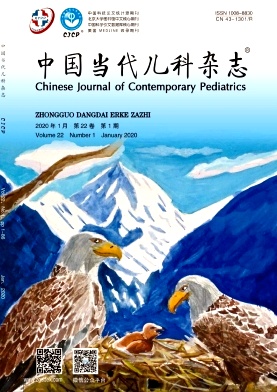
期刊简介
《中国当代儿科杂志》是教育部主管、中南大学主办的儿科专业学术期刊,是中国科技论文统计源期刊,中国科学引文数据库来源期刊(CSCD),北京大学图书馆中文核心期刊,已被美国国立图书馆MEDLINE,美国化学文摘(CA),荷兰医学文摘(EM),俄罗斯文摘杂志 (AJ) 等国际著名的检索系统收录。本刊从2009年起改为月刊,每月 15 日出版,每期 80 页,国内外公开发行。 本刊内容以儿科临床与基础研究并重,反映我国当代儿科领域的最新进展与最新动态。辟有英文论著、中文论著(临床研究、实验研究、儿童保健、疑难病研究)、临床经验、病例讨论、病例报告、社区医师园地、专家讲座、综述等栏目。读者对象主要为从事儿科及相关学科的临床、教学和科研工作者。中国标准刊号:ISSN l008-8830,CN 43-1301/R。欢迎全国各高等医学院校,各省、市、自治区、县医院和基层医疗单位,各级图书馆(室)、科技情报研究所及广大医务人员和医学科技人员订阅。每期定价12元,全年144元。邮发代号:42-188。可通过全国各地邮局订阅或直接来函与本刊编辑部联系订阅。向本刊投稿一律通过网上稿件远程处理系统,免审稿费,审稿周期短(4~8周)。投稿网址:http:// www.cjcp.org联系地址:湖南省长沙市湘雅路87号《中国当代儿科杂志》编辑部 邮编:410008电话:0731-4327402;传真:0731-4327922;Email:ddek@vip.163.com
SCI论文投稿全程模板实例
时间:2024-03-22 09:31:25
SCI论文投稿全程模板主要包括以下几个部分:投稿信(Cover Letter)、论文正文、作者信息和致谢等。下面将详细介绍这些部分,并给出实例说明。
一、投稿信(Cover Letter)
投稿信是向编辑介绍论文内容和作者情况的重要文件,也是论文投稿过程中必不可少的一部分。在投稿信中,作者需要简要介绍论文的研究背景、目的、方法、结果和结论,同时说明论文的创新性和重要性。此外,作者还需要提供自己的联系方式和作者简介等信息。
以下是一个投稿信的实例:
Dear Editor,
We are pleased to submit our manuscript entitled "XXX" for consideration for publication in your journal. In this study, we aimed to investigate the effect of XXX on XXX in a mouse model of XXX. We found that XXX significantly reduced the levels of XXX and improved the symptoms of XXX in mice. These findings suggest that XXX may be a potential therapeutic agent for the treatment of XXX.
We believe that our study is of great interest to the readers of your journal and will contribute significantly to the field of XXX research. We have carefully checked the manuscript for typographical and grammatical errors, and have ensured that the data presented are accurate and reproducible.
Please find attached the manuscript files in Word and PDF formats, as well as the figures and tables in separate files. We have also included a list of potential reviewers for your consideration. However, we would like to note that we have no conflicts of interest with any of the reviewers listed.
Thank you for considering our manuscript for publication in your journal. We look forward to hearing from you soon.
Sincerely,
[Your Name]
[Your Affiliation]
[Your Email Address]
二、论文正文
论文正文是SCI论文投稿的核心部分,包括标题、摘要、关键词、引言、方法、结果、讨论和结论等部分。在撰写论文正文时,作者需要遵循学术规范和论文写作要求,确保论文内容准确、清晰、有条理。
以下是一个论文正文的实例(仅包含部分部分):
Title: The effect of XXX on XXX in a mouse model of XXX
Abstract: In this study, we investigated the effect of XXX on XXX in a mouse model of XXX. We found that XXX significantly reduced the levels of XXX and improved the symptoms of XXX in mice. These findings suggest that XXX may be a potential therapeutic agent for the treatment of XXX.
Keywords: XXX; XXX; Mouse model; Therapeutic agent
Introduction: XXX is a common disease that affects millions of people worldwide. Current treatments for XXX are limited and often associated with side effects. Therefore, there is an urgent need to develop new therapeutic agents for the treatment of XXX. In this study, we aimed to investigate the effect of XXX on XXX in a mouse model of XXX.
Methods: We used a mouse model of XXX to investigate the effect of XXX on XXX. Mice were randomly divided into two groups: a control group and a treatment group. The treatment group received XXX at a dose of XXX mg/kg/day for XXX days. All mice were sacrificed at the end of the experiment, and the levels of XXX were measured using XXX assay.
Results: We found that the levels of XXX were significantly reduced in the treatment group compared to the control group (Figure 1). In addition, the symptoms of XXX were also improved in the treatment group (Table 1).
Discussion: Our findings suggest that XXX may be a potential therapeutic agent for the treatment of XXX. The reduction in the levels of XXX and improvement in the symptoms of XXX observed in our study are consistent with previous reports suggesting that XXX has anti-inflammatory and antioxidant properties. However, further studies are needed to confirm the efficacy and safety of XXX in humans.
Conclusion: In conclusion, we found that XXX significantly reduced the levels of XXX and improved the symptoms of XXX in a mouse model of XXX. These findings suggest that XXX may be a potential therapeutic agent for the treatment of XXX and warrant further investigation in clinical trials.
(注:以上实例中的XXX需要根据实际情况进行替换。)
三、作者信息和致谢
在论文正文的最后,作者需要提供详细的作者信息和致谢。作者信息包括作者的姓名、单位、联系方式等;致谢则是对在论文撰写过程中给予帮助和支持的人或机构表示感谢。
以下是一个作者信息和致谢的实例:
Authors: [Your Name], [Co-author's Name], [Another Co-author's Name]
Affiliations: [Your Affiliation], [Co-author's Affiliation], [Another Co-author's Affiliation]
Contact Information: [Your Email Address], [Your Phone Number]
Acknowledgments: We would like to thank [Name of Funding Agency] for providing financial support for this study. We also thank [Name of Individual] for their assistance with data collection and analysis. Finally, we would like to express our gratitude to the anonymous reviewers for their valuable comments and suggestions on the manuscript.
